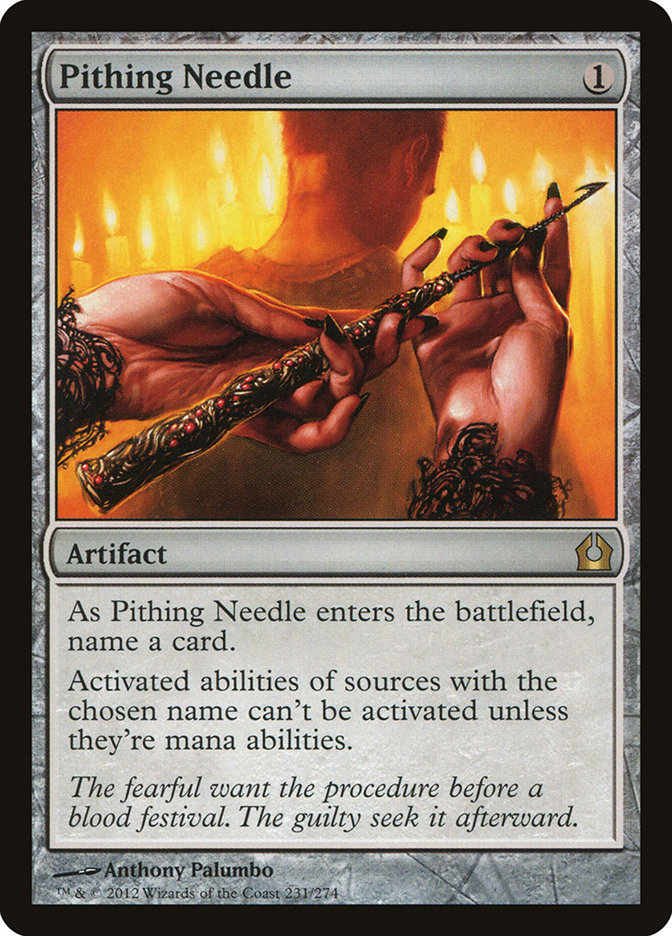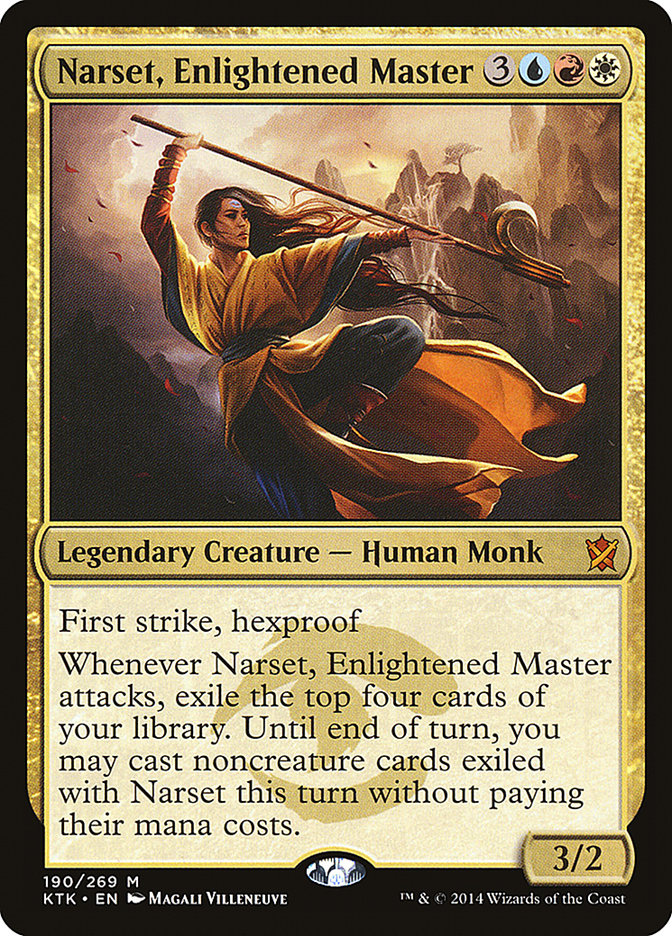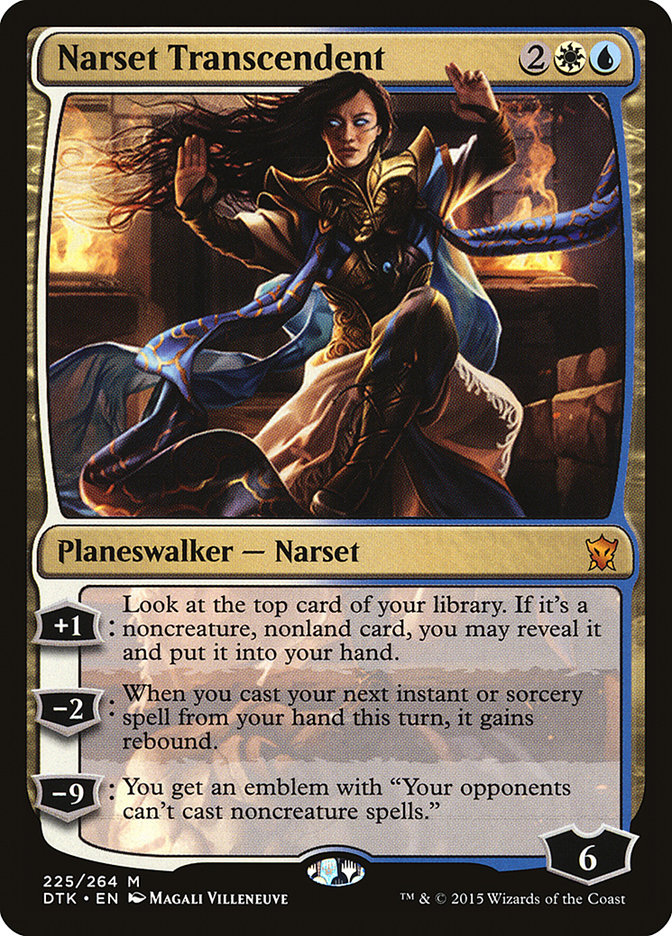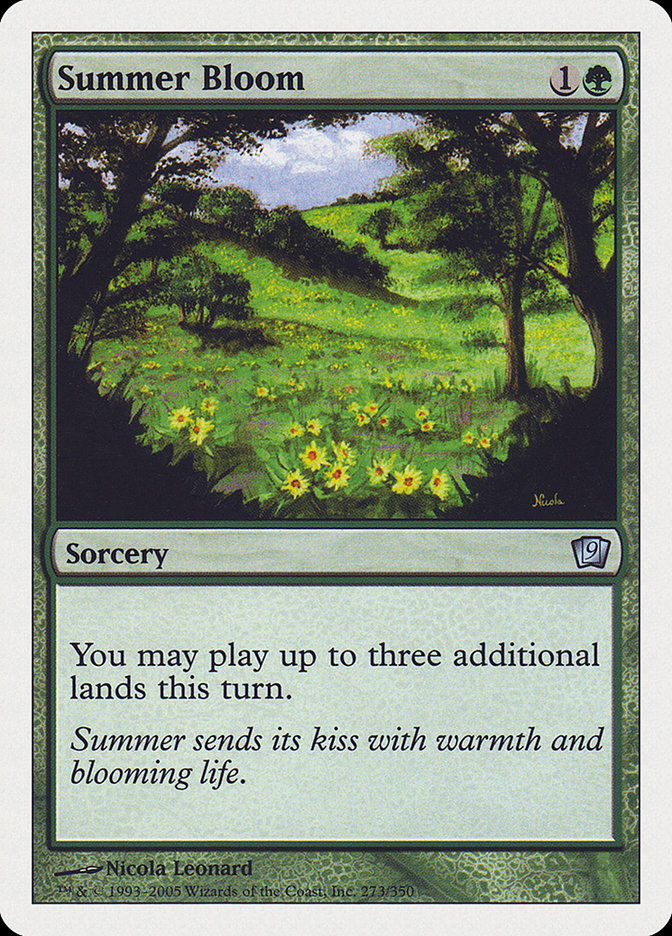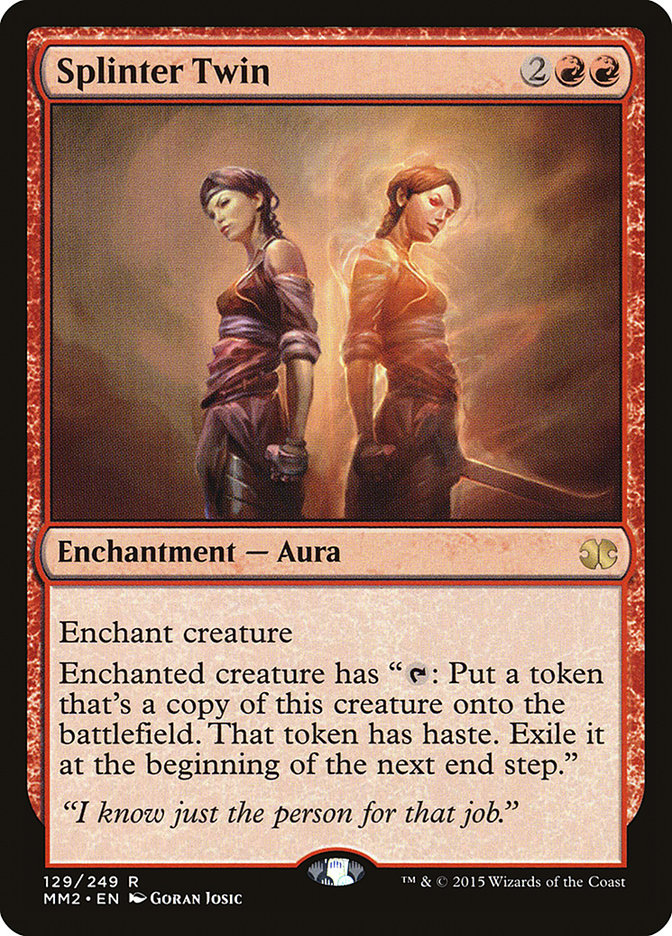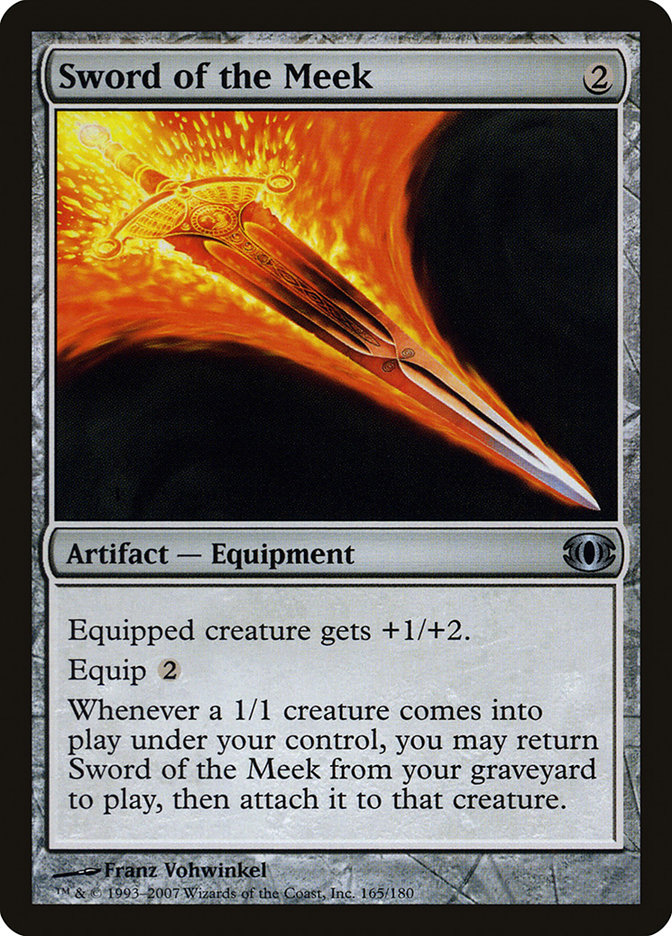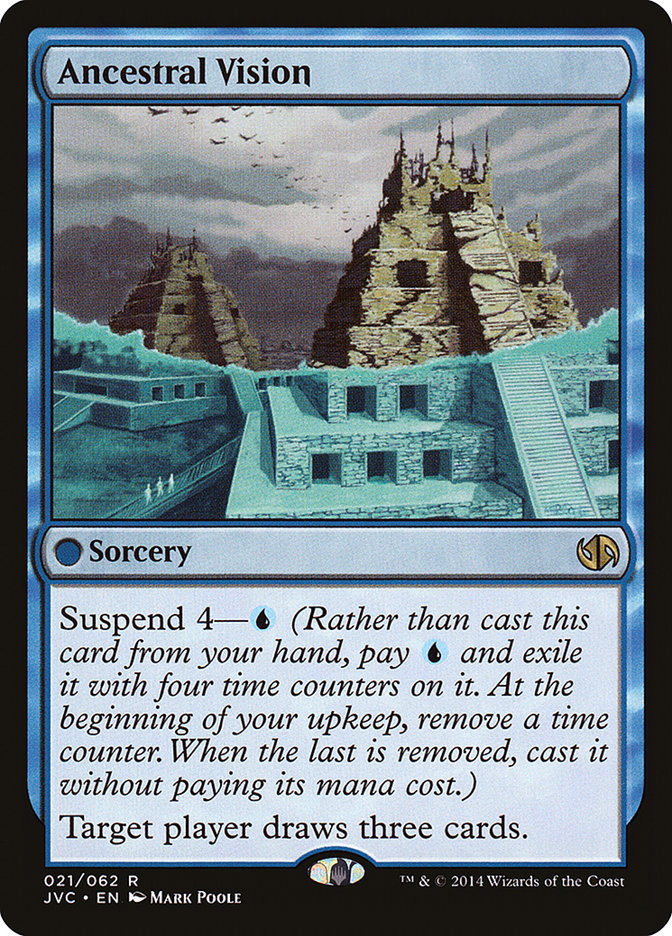I’m not a fan of cliches, but you really can feel the anticipation in the air. As I write this we’re all recovering from an epic weekend of Prereleases (six, in my case) and looking forward to the set’s release at the end of the week. It’s the first set to be released at the new time with the new schedule, so we’re in an exciting new world. Standard has started to feel stale, so we’re looking forward to freshening it up a bit. Oh, and of course we can’t forget the impending release-weekend SCG Open in Atlanta and the Modern Pro Tour coming hot on its heels.
Most people are spending the intervening weeks writing about their favorite cards from Oath of the Gatewatch, and I’ve been no different. Heck I have a bunch more to talk about next week, once I’ve had a chance to put them through their paces. Before we get there though, I do have a couple of things on my mind that I want to share with you all.
A Rose By Any Other Name Can Still Be Activated
It is possible for a ruling to be both correct and bad. That was the case at #SCGCHAR when Bradley Carpenter cast a Pithing Needle against Bob Huang and named Borborygmos. A little later on, Bradley realized his mistake when Bob got a Borborygmos Enraged on to the battlefield and destroyed Bradley’s face with it. The ruling was that even though the judge knew what card he meant to name, he actually named a different, legal card. He was held to that decision, and subsequently lost.
This is a very unfortunate and rare situation. There are maybe six cards of Magic’s 20 thousand to which this could apply. Of those, only this combination and one other (Vedalken Shackles, with Shackles also being a card) see any sort of serious tournament play. At the FNM level this is an easy one: ask each player what they really thought the player meant and then rule that’s what was called. At higher levels of rules enforcement though, the situation gets murky. From conversations with people who were there, I know that both judges in the vicinity and Bob himself heard exactly “Borborygmos” and no other words. They did know what he was trying to do, but they also knew that he had not done it. Judges cannot, however, rule by intent.
It’s reasonable to assume that not every player would know that Borobrygmos even existed. Is knowledge of the format not a skill that should be rewarded? Similarly, it’s entirely possible that the judge isn’t completely up to date with every competitive deck in Modern, or even every card. Relying on a judge (who cannot be expected to know every card any more than a player can) to interpret intent might have worked out in this case, but in others it could get dangerous.
Let’s look at some other potentially confusing situations where the rules are clear on what we should do:
Cedric casts Pithing Needle and names “Narset.” There are only two cards named Narset, and only one, Narset Transcendent, has an activated ability. Should a judge assume he meant that one? Relying on interpretation here could give an advantage to Cedric, who might not know you can’t stop the triggered ability of Narset, Enlightened Master.
Corbin plays Cavern of Souls and names Fish. He then taps the Cavern and an Island to cast Silvergill Adept, revealing a second Adept in hand. Is the Adept counterable? Fish is a legal creature type to name, but is also the colloquial name for the Merfolk deck. Do we want to allow judges the ability to interpret this? Does your answer change if the deck also contains Gurmag Angler and Man-o’-War?
Mike casts Meddling Mage and says “Naming ‘shift.” Jeremey untaps and casts Scapeshift, saying that the play is legal because Mike named Shyft. Do we want to allow this sort of word-mongering?
For those calling for a policy change, or for an addition to the rules to cover this sort of situation, that actually causes more problems. For one thing this is the darkest of corner cases, one that applies to so few cards and in so few situations that making a rule for it just clutters up the rules with largely needless conditions. Every “if, or, but” in the rules is a potential point of confusion and error, as well as a place to introduce inconsistency. As the rules stand, you actually have a wide range of things you can say when you don’t know the actual name of a card, and judges have a large degree of leeway to help you out. Not to harp on poor Bradley, but he could have said literally any of these and been able to do what he wanted:
– Angry Bobo
– Gatecrash Borborygmos
– Land chucky dude
– Whatever that thing is you killed me with last time
– Enraged legend thing
– Bob, the Killer Goldfish
I may have been stretching slightly on the last one, but you get the idea. As long as you can uniquely identify the card in some way, we can help you with the actual name. What we cannot do is tell you what to name, which actually happened to me at an event I was judging. A player called me over having resolved Pithing Needle, and said he had no idea what card to name. But I digress. The situation is unfortunate, the rule sucks, the judges were right, the alternatives suck more.
Strike Up The Banned List
I had an entire section here on what should go, what should not go and what should come back. The timing would have been great, too: either you would have read the article right after the announcement and I would have looked like a genius, or you would have read it before and laughed at me until I was proven right. But alas, some QA guy working on MTGO flicked the wrong switch and the MTGO Beta spoiled all my fun. In the words of a former QA guy who shall remain nameless, “Hoo boy, someone messed up.”
Instead of leaving everything as it was, I’ll go through the big combo decks in Modern right now and look at what got hit, what did not, what should have and what could have come back. I’ll even resist cursing my rotten luck.
Amulet Bloom: This is the main culprit in the minds of many. Even people who play the deck religiously agreed that something from it needed to be banned. The most common card I heard was Summer Bloom, and that is exactly what ended up going. Primeval Titan on its own is six mana and has not exactly set the world ablaze in other decks (unlike his Inferno cousin). Amulet of Vigor is another option, but I am a fan of leaving the quirky combo-enabling cards alone while banning the broken spells that form the combo. The deck can often win just by casting a Summer Bloom for value and untapping to cast a Titan, but an Amulet without an accelerator is much harder to break.
With Azusa and Oracle of Mul Daya left as the best options to play multiple lands in a turn, it’s very likely that this deck is now dead as a Tier 1 option. Cutting the Hive Mind kill could let the deck run Explore or some other ramp options, but what really broke the entire thing open was the ability to play four lands in one turn. Farewell, Amulet Bloom. We knew ye all too well.
G/R Tron: The deck has been around forever but keeps putting up more and more strong finishes. With Kozilek’s Return and a bunch of new Eldrazi about to join the already-included Ulamog, the Ceaseless Hunger, we could end up in the unfortunate position of the deck dominating the Pro Tour. Wizards has in the past shown a willingness to ban pre-emptively, and if they had gone that route, G/R Tron would probably have been at the top of the watch list. Expedition Map would seem like a reasonable choice, as it also weakens the nascent B/X Eldrazi decks that are abusing the process mechanic with Eldrazi Temple and Eye of Ugin while taking away G/R Tron’s single most reliable land search card. There is also the (somewhat evil-minded) group that advocates for the banning of Urza’s Tower. Breaking the actual Urzatron is certainly a way to kill the deck, but I would rather weaken it than kill it. My preference would have been to ban Eye of Ugin, severely hampering the consistency of the deck to find a game-winning threat while still allowing it to exist. It’s possible that doesn’t do enough, but it would be my starting point.
Alas, the lack of action on this front has made for the most predicatable Modern metagame in a long time. G/R Tron, Affinity, and Blue Moon are the biggest potential players, with Hate Bears solidly behind them. Will new broken combo decks emerge now that the threat of dying on turn 4 is significantly less?
Splinter Twin: Here’s the section I had before the announcement:
Twin won the first Modern Pro Tour and has been there or thereabouts ever since. It escaped scrutiny by being a fundamental turn 4 deck, although the argument could be made that it’s a turn 3.5 deck. It’s consistent, it’s powerful, it warps deckbuilding and sideboard choices around it and it can grind out wins just as well as it can combo kill you on turn 4. To make matters worse, the most commonly-played card in Modern (Lightning Bolt) cannot kill the preferred combo creature. Banning Splinter Twin definitely weakens the deck, but probably also kills it. What if we ban Deceiver Exarch? That leaves all the potential combo pieces open to more removal without killing the deck entirely. I would be surprised to see anything from Twin get banned, but…maybe.
Yup, caught me by surprise. Even the banning of Birthing Pod did not cause this much uproar in the Modern community. The thing is, the reasoning behind the ban is solid. Twin has been everywhere literally for the entire life of the format, and it has been warping the format around it since that time. Decks that warp the format are always up for nerfing, and really Twin escaped so long because other decks were bigger offenders.
Goryo’s Vengeance: Not that anyone but Bob Huang has done much winning with this deck, but the thing some people see as a problem is that a turn 2 kill is actually fairly likely and a turn 3 kill is significantly more likely than Storm, Infect or other combo decks can pull off. The inconsistency and vulnerability of the combo makes me think it’s unlikely to get hit, but Nourishing Shoal is the almost obvious choice here. Before the innovation of the green cards in today’s lists, the deck existed with Fury of the Horde as its win condition and was far less reliable.
Come Back, All Is Forgiven
Banning cards isn’t the only way to freshen things up of course. Removing cards from the banned list works just as well, and so far the choices Wizards has made in that regard have been solid, adding decks to the top tier without breaking the format. Some cards (Hypergenesis, Sensei’s Divining Top, Dread Return, Dark Depths, Jace, the Mind Sculptor) are probably stuck in Legacy limbo for the foreseeable future, but some denizens of the list could be brought back into the fold with minimal disruption to the format.
I would love to see Sword of the Meek come off the list, as I don’t think the Thopter Foundry engine is anywhere near as powerful these days as it was in old Extended. Sword was one of the cards banned before the format ever got started, and so has never had a chance to prove itself as benign. With Abrupt Decay in the format now, it becomes harder to keep a Foundry on the battlefield, and the combo isn’t a game-winning one anyway. Working against it is the fact that Punishing Fire and Second Sunrise are both banned because of what they do to the format, a group into which Thopter Sword might well fit. This is where the “but it doesn’t win the game” argument works against us. If anything gets unbanned I would put Sword of the Meek at the top of the likely list, but other potential unbans make me slightly nervous about that prediction.
I honestly thought this would happen at the same time that Treasure Cruise and Dig Through time got the axe, as sort of an olive branch to those blue players who enjoy drawing far too many cards. Ancestral Vision isn’t hurting anyone, and with all the processing going on, the case for unbanning it is stronger than ever. Cascading into it isn’t a concern with Bloodbraid Elf being banned and Shardless Agent not yet being legal in the format, and the control decks could do with the boost. It’s another card that has never been legal in the format, but there’s really very little that makes me nervous here.
It’s the new Grand Prix promo, and there has never been one of those that wasn’t Modern legal. Well, except Umezawa’s Jitte, but that was before Modern was a thing. Contrary to popular belief, that doesn’t mean anything. I know popular thought is that Stoneforge Mystic is coming back, and I can see it being potentially safe (Kolaghan’s Command does a great job of ensuirng that), but I honestly believe any Stoneforge unbanning will lead to a Batterskull ban, either at the same time or immediately after. If Birthing Pod has taught us anything, it’s that tutor effects are as good as the things they can tutor up, and turn 3 Batterskull is pretty good. I don’t think the two should coexist in Modern, which means one would have to go. Which card is better for the format? My vote goes to Batterskull, honestly.
It’s worth mentioning here that unbanning Stoneforge Mystic actually hurts the chances of Sword of the Meek being unbanned. The combo might not be a game-winning one but if there are reservations about making it legal, they certainly won’t want to make it easier to find at the same time.
Coverage Recovery
One of my favorite things about StarCityGames.com is their commitment to filling gaps in the Magic community. The SCG Tour® is a perfect example of that, and the coverage model we (if I can be presumptuous) use goes to show where the focus is: on tournament-grinding players who love all the match content they can get. SCG knocks it out of the park on this front and is virtually untouchable at doing so.
Wizards of the Coast does not and should not try to compete. Their model has to be broader, has to appeal to new players and Spikes alike, and has to hold the attention longer while being a commercial for the game. Not an easy task, but for as long as I can recall it is one they have failed to accomplish.
The recent announcement that detailed the promised changes to the Wizards coverage model was a decent start, but it will not come close to resolving all the underlying problems that exist with Grand Prix and Pro Tour coverage.
Let’s start with the big one: diversity. Wizards deserves credit for introducing Gaby Spartz to the on-air coverage team while adding Melissa de Tora and Meghan Wolff to written coverage. That is an excellent way to encourage female players and viewers into the game, seeing people like them in prominent roles. Here’s the problem though: diversity in normal life goes far beyond gender, and in Magic it goes further still. Where are the people of color, the members of the GLBTQ+ community? What about those viewers and players who identify with those groups? Beyond the equity-seeking groups that are now starting to be represented on cards (which is awesome, by the way), what about diversity of psychographics? If diversity is the goal, and it should be in 2016, there should be diversity across the spectrum of Magic as well. We need people to speak to Vorthos, Timmy/Tammy, Johnny/Jenny, and even family members who may be clueless about the finer nuances of the game. Accessibility and relatability should be the goals for official coverage, even if the actual match content is beyond them.
By the same token, the Spikes watching need to realize that not everything is for them. We need to see lifestyle and culture pieces. Let’s talk to the cosplayers, the artists, the people there to play Commander all weekend. Interview judges about their journeys. Talk to pros about things outside the game but tangentially related, like eating on the road or finding good places to unwind. Find the stories in the room and highlight them. Are family members of pros in the building? Let’s talk to them. Let’s have people sending photos and Vines of their viewing parties at their LGSes, and let’s encourage those stores to hold these parties. Let’s see the venue and hear what’s unique about it and the city.
Above all, though, we need to do more to highlight the players. The SCG Tour® does an amazing job of this with their bio splash screens, and that’s exactly the sort of thing we need. Jamie FNMPlayer might turn on coverage and see Brian Kibler vs Ari Lax, but who will he root for? Why? If he doesn’t know or learn anything about these two players, why will he care? Aside from people getting excited about the decks and cards on display, let’s also encourage them to get behind the players.
Other sports, both e-sports and more conventional ones, have had success in promoting the players alongside the game. As the brand of a pro player grows, so does their following. As the following grows, so do the viewers. More eyeballs on the product means more attention from potential sponsors which means more money in the prize pool. See where we’re going here? A side-effect is that the players also attract the attention of sponsors, which allows them to earn more from playing Magic. As the top players earn more, they can focus more time on Magic and be more present at events and online. The more we see of the top players, the more local players will come out to play against them.
The whole domino effect is kicked off by simply pushing the first one: make coverage special. Help people identify with the players, the game, the sights and sounds and feel of the event. I would like to hope that the reduction in number of events being covered is a step in this direction, to ensure they get the quality and balance right. All these features have to be used in moderation and cannot replace the reason for the coverage, namely the matches. But if done correctly, there would be no downtime with public-domain music and a countdown clock, and very little match repetition. The more content we see, the more people there will be to see it.
I hope you all had fun this weekend getting your hands on what looks to be a really fun set. I’d be very interested in your banning and unbanning thoughts, so please send them my way!
Thanks for stopping by and until next time…Brew On!


